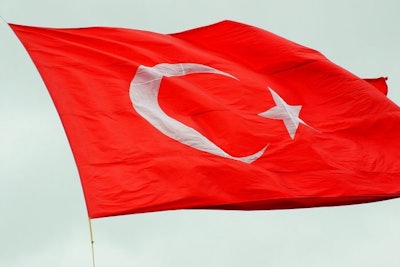
Turkey’s output of chicken meat, eggs, and turkey meat was lower for the first six months of 2021 than in the year before. While the pandemic played a role, these trends are mainly attributed to high feed costs. The situation is made even worse by depreciation of the nation’s currency for an industry largely reliant on imported feed ingredients and breeding stock.
Compared to the first six months of 2020, the number of chickens as well as volume of chicken and turkey meats and chicken eggs in Turkey had declined for the January-June period of this year.
At just under 600 million, the number of slaughtered chickens was down 4.0% year-on-year, according to the Turkish Statistical Institute. National chicken meat output, however, was down by just 1.4% at just under 1.092 million metric tons (mmt).
At 23,017 metric tons (mt) for the six months, turkey meat production dropped by almost 22% year-on-year.
Hen egg output in the half-year was 3% lower than in the same period of 2020 at just over 9.57 billion.
Comparing June 2021 figures with those of the same month last year hint at an improving situation for the chicken meat and egg sectors. While number of birds slaughtered was up 2.1%, meat production was 3.0% higher year-on year. June egg production was just 1.4% below the previous year’s level.
For turkey meat, the signs are less encouraging. Output in the month of June was almost 29% lower than the comparative period.
Half-year growth in Turkish poultry exports
For the January-June period this year, Turkish poultry exports were valued at US$503.5 million, reports Anadolu Agency.
Egg exports were 65% higher year-on-year at US$182.4 million, while the poultry meat trade for the period rose 22% to US$321.1 million.
Slow expansion in chicken meat forecast
As a result of the growing population, Turkey’s domestic demand for chicken meat is forecast to rise — but a number of factors are holding back output, according to the latest report from the USDA Foreign Agricultural Service (FAS).
It identifies a sharp rise in feed prices as well as COVID restrictions forcing the closure of many fast-food outlets as the chief factors putting a brake on expansion of the sector. Furthermore, exports have risen, and market prices are relatively high.
As a result of these factors, FAS forecasts a 1.5% expansion in Turkish chicken meat output this year to 2.17mmt. Next year, production is expected to reach 2.23mmt — a growth rate of 3%.
Chicken export growth to continue
This year, Turkey’s chicken meat exports are likely to be 10% higher than the 442,214mt achieved in 2020, according to the FAS. With further expansion next year at the same rate, the agency forecasts the export volumes at 490,000mt and 539,000mt for 2021 and 2022, respectively.
Feed prices lead to poultry production cuts
For a number of reasons, Turkish poultry production has been growing inefficiently over the past three years, according to FAS. It identifies factors that have disrupted the country’s agriculture generally, such as depreciation of the national currency, shortages of poultry breeding stocks and in slaughterhouse capacity, and a recent drought, as well as the COVID pandemic.
Corn (maize), soybeans, and wheat are all grown in Turkey. However, the volumes are insufficient to supply the poultry sector, and so the country is heavily dependent on imported ingredients. FAS reports that around 40% of the corn required by the poultry sector is imported, as well as 97% of the soy. As a result, the national currency situation has exacerbated the challenges of rising global feed prices.
According to FAS, broiler feed prices in 2020 were 60% higher in 2020 than in the previous year.
Feed costs now account for 80% of total broiler production costs in Turkey. Some poultry producers have cut their output by as much as 30%, citing the high costs of production.
For Turkey’s egg sector, high feed prices are also blamed for the forecast stagnation into 2022.
Growth in Turkey’s halal export market
For the first three months of 2021, Brazil-based poultry company BRF reported strong performance in the halal poultry sector by its Turkish subsidiary.
According to the company, the market is strong. Net revenue was up more than 44% year-on-year, despite economic challenges, depreciation of the Turkish lira, and the on-going coronavirus (COVID-19) pandemic. It reported average prices 26% higher than the previous year, largely driven by price rises in Turkey.

















